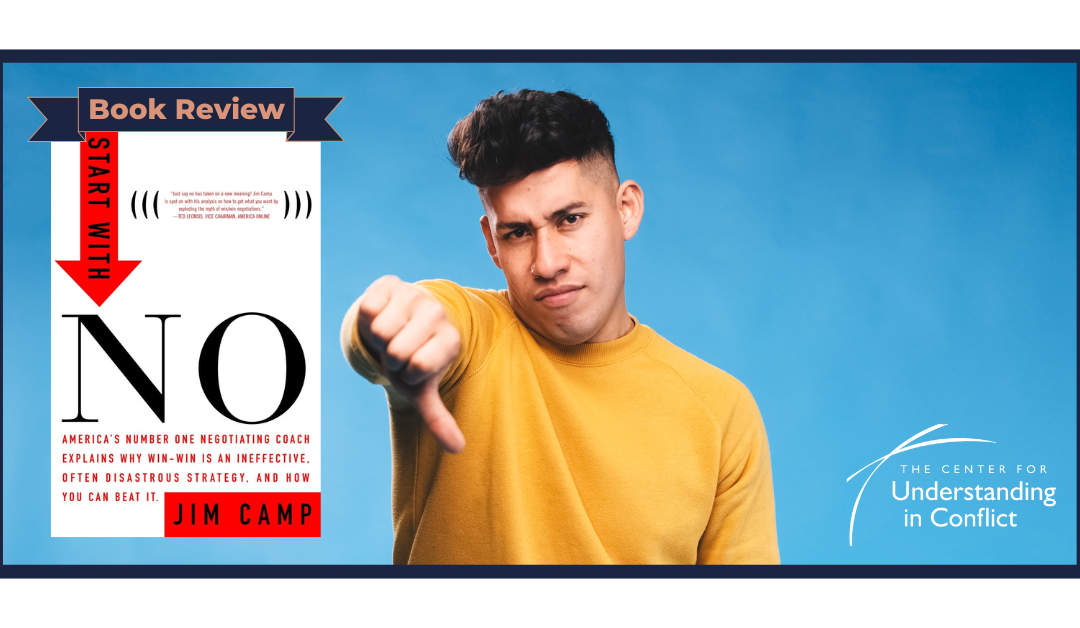Jim Camp’s Start with No takes a hard-edged, tactical approach to negotiation—one that might work in high-stakes business deals but feels worlds apart from how understanding-based mediators and conflict professionals approach conflict. Camp’s philosophy is built around control, persuasion, and calculated detachment. His title alone—Start with No—sets the tone: negotiation, in his view, is about holding firm, avoiding compromise, and steering the other party toward your desired outcome.
For mediators who believe in the power of understanding, this mindset is not just different—it’s fundamentally at odds with what we know about conflict resolution. Conflict is deeply human. It’s not just a matter of power plays and strategic maneuvering; it’s about emotions, relationships, and the ways people feel seen and heard. Mediation isn’t about “winning” at the other person’s expense. It’s about transformation—about helping people move through their conflict in a way that leaves them with not just a solution, but a deeper understanding of themselves and each other.
That’s why Camp’s framework feels so limited. His focus is on control—on structuring the conversation in a way that keeps the other side off balance, forcing them to work toward “yes” while you remain in command. But real resolution doesn’t come from pushing people into agreement; it comes from helping them uncover what really matters to them and to the person sitting across from them.
When mediators work with people in conflict, we’re not looking for a quick fix or a way to “win” the negotiation. We’re looking for something more lasting and meaningful. Conflict can be an opportunity—a chance for people to break free from old patterns, to see each other in a new light, to craft a solution that actually works for both of them. That doesn’t happen through coercion or manipulation. It happens through curiosity, patience, and a willingness to dig deeper.
Camp’s approach also dismisses the role of emotion in negotiation, seeing it as a liability rather than a source of insight. But emotions aren’t something to be suppressed or ignored—they’re a window into what’s really driving a conflict. When mediators help people understand not just what they want, but why they want it, everything shifts. Suddenly, a conversation that felt stuck starts to open up. People begin to listen differently. They stop seeing each other as obstacles and start recognizing each other as fellow human beings.
And that’s where the real magic of mediation happens. It’s in those moments when someone, after being caught in anger or frustration, finally feels heard. It’s in the relief that washes over a person’s face when they realize they don’t have to keep fighting the same battle—they have a choice to approach it differently.
Camp’s book might work for those who see negotiation as a battle of wills, but it misses the deeper potential of conflict. The most powerful resolutions don’t come from forcing the other side into submission. They come from creating space for real conversation, from supporting people in making choices that align with their deeper values and needs.
For mediators and conflict professionals, Start with No serves as a reminder of what we stand for. We don’t start with “no.” We start with possibility. With the belief that when people are given the right support, they are capable of working through even the most difficult conflicts. That understanding—real, human understanding—is far more powerful than any negotiation tactic. And that resolution, at its best, isn’t just about closing a deal. It’s about creating a way forward that people can truly believe in.
